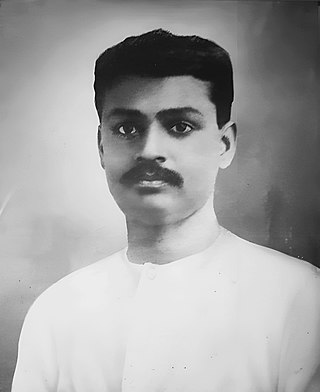| |||||
| Centuries: | |||||
|---|---|---|---|---|---|
| Decades: | |||||
| See also: | List of years in India Timeline of Indian history | ||||
Events in the year 1916 in India.
| |||||
| Centuries: | |||||
|---|---|---|---|---|---|
| Decades: | |||||
| See also: | List of years in India Timeline of Indian history | ||||
Events in the year 1916 in India.
Events in the year 1934 in India.
Events in the year 1911 in India.

Charles Hardinge, 1st Baron Hardinge of Penshurst, was a British diplomat and statesman who served as Viceroy and Governor-General of India from 1910 to 1916.
Events in the year 1931 in India.
Events in the year 1930 in India.
The Indian Statutory Commission, also known as the Simon Commission, was a group of seven members of the British Parliament under the chairmanship of Sir John Simon. The commission arrived in the Indian subcontinent in 1928 to study constitutional reform in Britain's largest and most important possession. One of its members was the future leader of the Labour Party, Clement Attlee, who later became committed to self-government for India.
The Revolutionary movement for Indian Independence was part of the Indian independence movement comprising the actions of violent underground revolutionary factions. Groups believing in armed revolution against the ruling British fall into this category, as opposed to the generally peaceful civil disobedience movement spearheaded by Mahatma Gandhi.
Kunwar Pratap Singh Barhath, also known as ‘Kunwar Ji’, was an Indian anti-British activist known for his role in the revolutionary plot to assassinate the Viceroy of India, Charles Hardinge, in 1912. He was a prominent member of the Revolutionary Party led by Rash Behari Bose.

Sachindra Nath Sanyal was an Indian revolutionary and co-founder of the Hindustan Republican Army that was created to carry out armed resistance against the British Empire in India. He was a mentor for revolutionaries like Chandra Shekhar Azad, Jatindra Nath Das, and Bhagat Singh.

The Delhi Conspiracy case, also known as the Delhi-Lahore Conspiracy, refers to an attempt made in 1912 to assassinate the then Viceroy of India, Lord Hardinge by throwing a local self-made bomb of Anushilan Samiti by Basanta Kumar Biswas, on the occasion of transferring the capital of British India from Calcutta to New Delhi. Hatched by the Indian revolutionaries underground in Bengal and Punjab and headed by Rash Behari Bose, the conspiracy culminated in the attempted assassination on 23 December 1912, when a homemade bomb was thrown into the Viceroy's howdah as the ceremonial procession was moving through the Chandni Chowk suburb of Delhi.
Events in the year 1914 in India.
Events in the year 1912 in India.
Events in the year 1910 in India.
Events in the year 1904 in India.
Events in the year 1884 in India.
Events in the year 1878 in India.
Events in the year 1913 in India.
Events in the year 1880 in India.